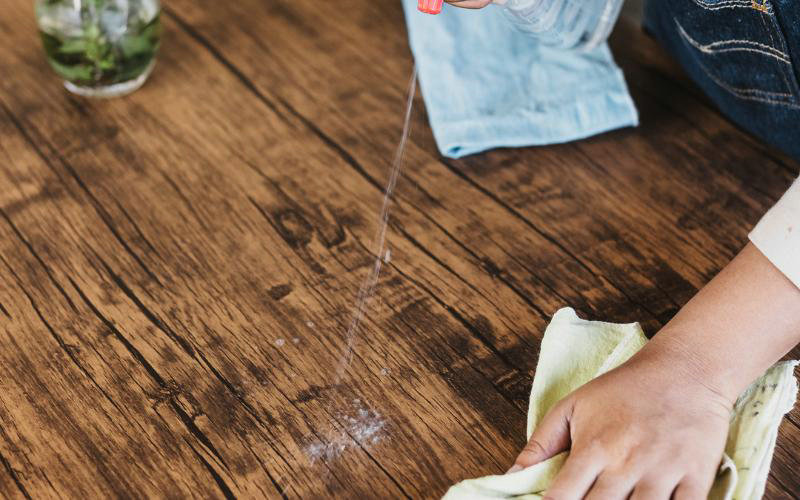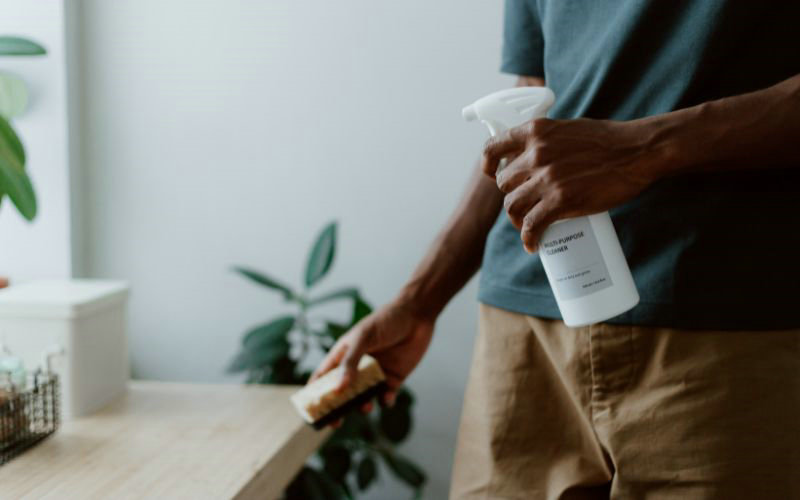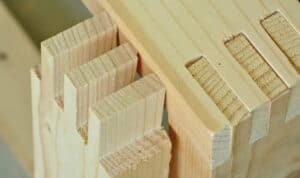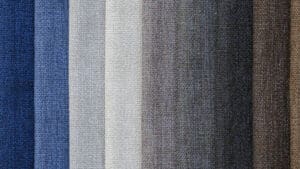
Removing wax from wood surfaces is easier than you might think. With a few simple tools and techniques, you can restore your table to its former glory. In this article, we’ll walk you through the most effective methods to remove wax from wooden tables, so you can enjoy your furniture without unsightly wax residue.
Why does Wax Appear?
Commonly, there are two reasons that wax builds up on wooden furniture: Regular Polishing or Candle Wax.
Frequent use of wax-based polish can lead to layers of wax that diminish the wood’s natural shine, or sometimes, when you light up candles, the accidental spills harden and cling to the wood surface.
So, how can you identify if there is wax buildup on the wooden table? Wax usually appears as a dull or cloudy surface and has a sticky or greasy texture.
While you might feel compelled to remove this buildup, it’s essential to approach wax removal gently. Aggressive scrubbing can damage the delicate wood beneath the wax layer.
Preparation Before Wax Removal
Before you start removing the wax from your wooden table, it’s essential to prepare your workspace and materials. This will ensure the wax removal process is efficient and safe for both you and the furniture.
Gather Your Supplies:
- A pair of protective gloves to keep your hands clean and prevent any potential irritation from cleaning solutions.
- A soft cloth or paper towel will be instrumental in both applying heat and wiping away the wax.
- Use an iron or hair dryer to apply heat if you’re using the heat method.
- Prepare an ice bag or ice cube if you use the cold method.
- A plastic scraper or a credit card for gently scraping off the softened wax.
Preparation Steps:
- Put on your gloves to protect your hands throughout the process.
- Clear the table, removing any objects and debris to give yourself a clean working space.
- Ensure you’re working in a well-ventilated area, particularly if you’re using a hair dryer or any cleaning solutions. Open windows or set up a fan to circulate the air.
- Move your wooden table away from direct sunlight and heat sources; extreme temperatures can affect the wood’s finish.
Remember, patience is vital during the preparation phase. Rushing through these tasks can lead to mistakes or inadequate setup that could compromise the cleaning process. Taking your time now will help ensure a smoother and more effective wax removal.
Methods for Removing Candle Wax from Wooden Tables

Cold Method for Loose Wax
When you decide to use the cold method, place ice in a plastic bag or directly use an ice cube and set it over the wax spilled on your wood table. Let it sit until the wax is firm and brittle to the touch. This may take several minutes. After it becomes firm, gently use a plastic scraper or an old credit card to lift the wax off of the table. The cold temperature makes the wax easier to remove as it hardens and doesn’t stick to the wood as much.
Heat Application for Softening Wax
Set your hair dryer to a medium setting or your iron to a low heat setting and direct the heat towards the wax on your wooden table. Then, place a clean cloth over the softened wax and apply gentle pressure with the iron or keep heating with the hair dryer.
The wax will melt and absorb into the cloth. After that, use a fresh portion of the cloth to avoid spreading the residue.
Solvents for Stubborn Residue
Needed Solvents:
- Mineral spirits or white vinegar
If you’re dealing with stubborn wax residue, dampen a cloth with a small amount of mineral spirits or a mixture of equal parts water and white vinegar. Use this cloth to gently rub the wax stain until the residue is fully removed. Make sure to go along the grain of the wood, and don’t oversaturate the surface as you don’t want to damage the finish.
If you need a mild abrasive, mix baking soda with water to create a paste. Alternatively, cream of tartar is a gentle, natural abrasive—mix it with water to form a paste and apply it onto the wax spots with a soft cloth. Gently work in the direction of the grain, and follow up by wiping with a damp cloth to remove any residue.
Aftercare: Maintaining the Warm Glow of Wood
After you’ve successfully removed wax from your wooden table, maintaining its natural beauty is key to ensuring it continues to radiate that warm glow. Here are some caring steps to follow:
Buffing the Surface: Regular buffing helps keep the sheen alive on your wooden table. You can do this by:
- Use a microfiber cloth to gently buff the surface in a circular motion.
- Focusing on areas that are frequently touched, as they lose their luster quickest.
Applying Furniture Polish: A natural or silicone-free furniture polish can further nurture the wood’s appearance. Apply polish sparingly – a little goes a long way:
- Put a small amount of polish on a clean microfiber cloth.
- Spread evenly in the direction of the wood grain.
- Allow setting for a few minutes, then use another clean cloth to remove any excess.
Remember: Choosing the right polish can enhance the natural beauty of the wood and give it a warm glow without leaving residue.
Routine Care: To prevent future wax spills and maintain the table’s charm, keep these routine care tips in mind:
- Always use coasters under candles and beverages.
- Keep the table away from extreme temperatures and direct sunlight.
- Dust it regularly to avoid buildup that can dull its finish.
Special Considerations

When tackling wax removal from wood, the approach largely depends on the wood’s finish and context. Whether dealing with unfinished surfaces or hardwood floors, taking the right steps will ensure no damage while effectively clearing away the residue.
Removing Wax from Unfinished Wood
Unfinished wood is more vulnerable to wax penetration because it lacks a protective seal. For loose wax, you can gently scrape it away using a plastic putty knife, being careful to avoid splintering the wood. If wax sits in grooves, consider a soft brush or toothpick to tease it out, always moving parallel to the groove to reduce the risk to the wood’s surface.
Frequently Asked Questions
Is rubbing alcohol safe to use for wax removal on wooden items?
Rubbing alcohol can be used on wooden items, but with caution. It’s best for small amounts of residue and should be applied with a soft cloth. Test on an inconspicuous area first to make sure it doesn’t damage the finish.
What are the techniques for removing wax from wood before painting?
Before painting, wax must be completely removed. Start with a plastic scraper for the bulk of the wax. You can then clean any residue with mineral spirits or a wood-specific cleaner. Ensure the wood is completely clean and dry before applying paint.
How do you get furniture polish off of wood without damaging the finish?
Apply a small amount of mild dish soap mixed with water to a soft cloth and gently clean the affected area. For more stubborn polish residue, you can use a white vinegar and water solution. Always follow up with a dry cloth to remove any excess moisture.






